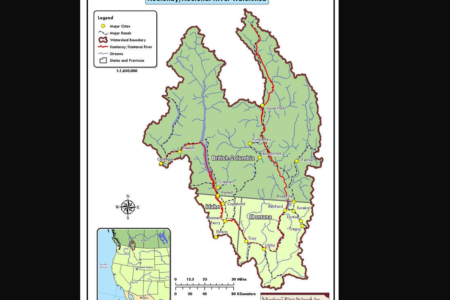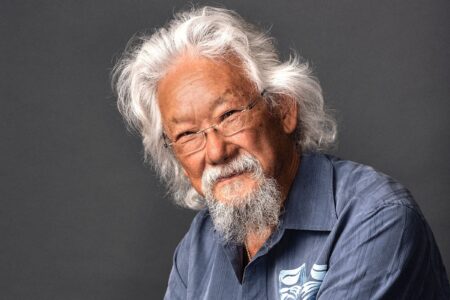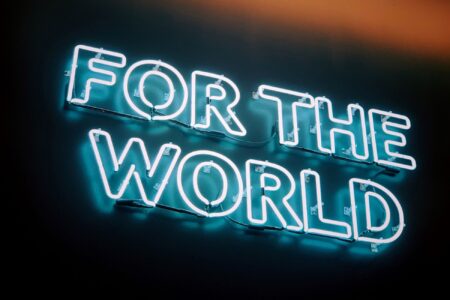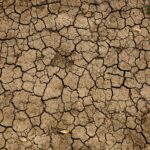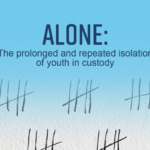Magnesium Dreams - Next Boom Just Like The Old Boom?
Continuing on a mineral extraction project started in 2003, WHY (Western High Yield) Resources have been conducting test drilling on a section of their 6,000 plus hectare claim on Record Ridge for the past two years.
The project involves the extraction and processing of a large magnesium deposit on the site. Planned to involve a large open pit mine as well as an on-site smelter to process the ore for use largely in the automotive industry, the estimated and already found value of the minerals on site at today’s prices is enormous. Think Rossland’s old gold mines many times over. See our backgrounder information attached at the bottom of this story to learn more about the plans. Could an open pit magnesium mine and smelter a few kilometers outside of town be the next boom?
See WHY’s Video and explanation of the work being done on Record Ridge here
This week I caught up with Frank Marasco, President of WHY Resources, to get an update on the status of the project and the company’s magnesium dreams..
What is the current time-line for the Record Ridge drilling project?
We have to work through the stages to get to pre-feasibility. So I still need to do the economics/scoping of it all, then the pre-feasibility, then the environmental and then I receive the permits after all of that. That is probably 2.5 to 3 years and 10 million dollars away.
I’ll be spending probably 1 million this year. I’ve spent 10.3 million to date on the project and we expect another 10 million to get to approval. We’ve been working on it for 5 years. We’re 2.5 /3 years away from permitting and approval just for the open pit. After the approvals for the open pit to get the smelter it’s probably another 3 to 5 years process to build that building from start to finish. It’s a long process: it’s a 10 year project.
Along with the open pit magnesium mine you’re planning an on-site smelter to process the mineral. With Teck just down the road we’re quite familiar with smelters. Give us an idea of the scale of that aspect of your project.
Technology has changed so we don’t need those big brutal beasts for smelters anymore. With the new technology we still have to get approvals from the provincial government and federal government. With the new technologies it’s about a tenth of the price and a tenth of the size of say the Trail smelter of 100 years ago. Another thing that this new technology allows for is no more tailings ponds and there is hardly any water being used at all.
There is also a big difference in electrical power use. Where a smelter like the one in Trail – let’s say it needed 3 megawatts of power every hour on the hour to produce (and I’m talking water production, processing it and cleaning it and everything let’s say 65,000 gallons a day). If you need 3 megawatts from the old technology, the new technology would only need 30 kilowatts to do the same work. It’s all improving.
The big thing is no tailings ponds. Can you imagine? They are like a cancer to the earth. I don’t think you need the big smelters like we’ve had before. I don’t know the rules, however, and I might be forced into building one.
You have to remember there are jobs being created by this and all governments like to create jobs. Once we’re set up and it’s totally set up in the Rossland area you’ve got a minimum of 1,000 years of work, probably 3,000 years of work.
Is that 1,000 years of mining or 1,000 years in man-hours?
The first 1,000 feet of open pit mining would probably take 1,000 years of employment to get through. That’s 1,000 years with probably 200 staff 5 days a week working there, it’s that big.
This mineralization was found back in ‘91, ’92 by Kurt D. Hancock of the BC government and it was 7.5 square kilometres. You consider how big that is, that’s nearly 5 square miles . I’m talking drive 5 miles, drive down five miles turn right and drive 5 miles, that’s a big area.
What kind of environmental impact on the land do you forsee such a large project having on the surrounding area?
I think it’s very minor with the new technology. It’s just an open pit and it produces no CO2 emissions and no tailings ponds. Can you imagine no CO2 emissions and no tailing ponds? So there is no environmental footprint whatsoever. If there is one it is very minor and very tiny.
Apart from a giant hole in the ground?
With the new technology available I think it would be the best setup around because there is no carbon footprint and very little water used. It propels itself, it runs on its own the new technology. This is what we’re looking at. If you can get that technology approved then I don’t think there would be an issue environmentally, but I still have to go through the procedures and through the environmental reports and it’s a big procedure.
If I don’t get all of the approvals you can’t move forward so I have to spend another ten million dollars to get to that point and get the open pit approved.
Are there any operating examples of this new technology already out there that we can look to for comparison?
No, this is new technology. We’re working on the rights for it in Alberta right now and working on the rights to it regionally in BC. These units cost from 10 million US dollars up to 200 or 300 million dollars. I’d only have to spend $150 to $200 million with this technology versus the $1.5 to $2 billion for the old smelter technologies like the one in Trail.
Where, approximately, on the property would the smelter be located?
We’re so far away from that point; we’re still three to five years away from that point. We’d have to get all of the approvals from the government first, but we do have full infrastructure in place. We’ve got roads, electricity, water, natural gas right at the property. That’s all a plus as we don’t have to do any of that work there. We just have to attach it all to the building. Producing magnesium would be just fantastic to produce that right on site.
What would the product you ship out of the facility be?
You know those cement parking blocks you see in parking lots in front of your vehicles sometimes? What we would ship out would look a lot like that, about 1/3 of that size.
What they said 5 years ago, what they predicted is all falling into place today. They predicted a post secondary war right after the war. They said this metal is a strategic metal and it’s going to come to big use in the future. That is coming to fruition right now. We’re at the embryo stage of this asset being turned into a metal, and alloy metal which is the magnesium.
Using the calculator on the American Foundry webpage we calculated the value of the mineral find and potential share values. At 2.95 dollars per pound, based on the size of the known mineral find the value of the mineral output was calculated to be $47 billion US dollars. The calculated share price based on those values would be just under $1,000/share. Currently shares are trading at 47 cents per share.
My shares are way undervalued as you can see. I have an analyst report saying it’s worth $1.57 and we’re at 47 cents a share right now.
Just how big is the value of the project?
If you worked out 7.5 square kilometres there is probably 1.5 to 2 billion metric tons on the site. That is if the government results from the early nineties are correct. What we calculated above is what we know is there. That’s science and we can only talk from science being a publicly traded company. The size of the estimated mineral resource is about 60 times the size of that we know is there.
The government mapped it out back in the early 90s. If that is correct we’re right in the middle of this one rock boulder. Imagine one rock in your hand and now imagine one rock that is 7.5 square kilometres. If that is correct, at that size this is probably a two or three trillion dollar asset sitting there. Right now we’ve only just proved the 47 billion dollar value with our test drilling so far.
Can you put that potential value of the project into scope for us?
If you stand on this property and the government is right about its size—well, you know where the oil sands are in Fort McMurray? Go back 45 years ago and stand on that land when there was nothing there and you were standing on a three to four billion dollar asset right there. So you understand the size we’re talking here?
What drilling is going on at the site presently? I understand you are mining gold on the claim?
We’re drilling for gold right now as we speak because I’ve got to get financing of another 10 million dollars before I can continue on this report. The recommendations by SRK consultants came up with a strategy. We’re going to follow their strategy but we have to raise 10 million dollars first to get there. I want to finish this off, I want to get it to pre-feasibility stage and I want to get the environmental report approved for permitting for open pit to start with. I can sell the ore also. I can sell that abroad without even having a smelter. My goal is to still go through that process, but the ore which would take me 1000 years to get working seven days a week alone. There is lots of gold up there.
Where is WHY Resources based?
We’ve got two offices. One in Rossland and one in Calgary. We’re based out of the Casa Alpina. We took two rooms there and converted it to our office so we’re based out of their locally. We’ve been there for three years. All of the bills, accounting and lawyer work is done out of Calgary.
How has the response to your project in town been so far?
It’s been excellent working with the local governments so far. (Writer’s note: when contacted about this story, Rossland’s Mayor was not familiar with WHY resources or this project) Everyone wants it, the town wants it. I mean we’ve spent $10 million in the community already. Look at all of the benefits to the community. That $10 million was dispersed all around to Rossland and Trail and Vancouver. A lot of families have been fed so far from that $10 million. Just mention the management of WHY resources around town and you will hear nothing but praise because we pay all of our bills, right?
What are your next steps moving forward?
Now I’m trying to raise funds again so I can continue the program. I just raised $500,000 and it’s almost already gone so I’ve got no money left. There is very little money left in the bank. I’ve got about $300,000 left. I’m going into financing now so I’m going to get another million dollars to finish the program and then I have to raise another ten million dollars to finish the report. It’s a big procedure.
I started negotiating on this property in 2001. I have been working on the property since 2003. We’re still two to three years away from completing the economic and environmental report. We’ve still got to get the scoping, pre feasibility, economic and environmental report and then we’re allowed permitting if we follow procedures and everything is in place correctly. See how hard that is? Those reports will cost me around three million dollars, just the reports. So we’re creating a lot of work in the area. We’re excited about it.




